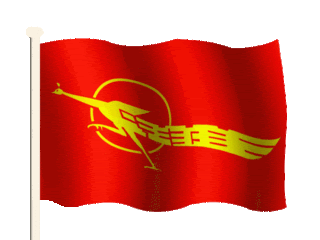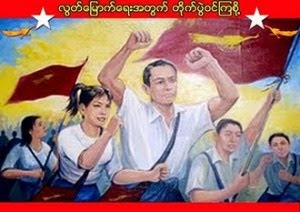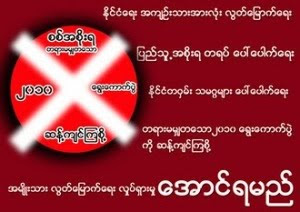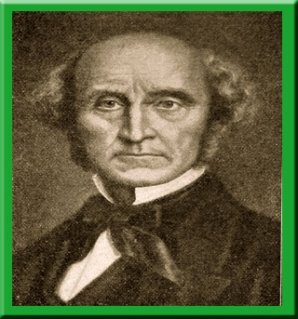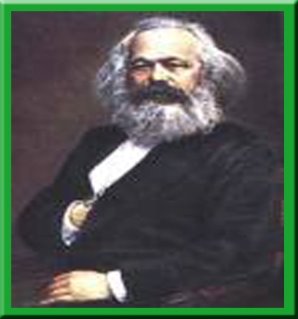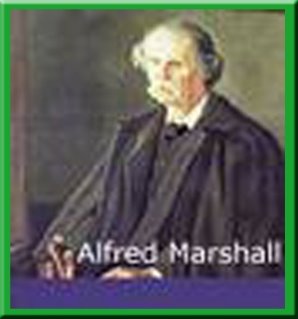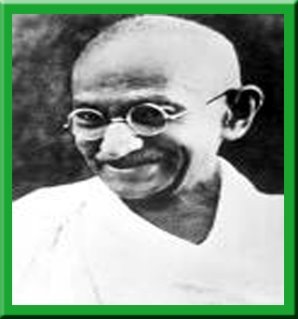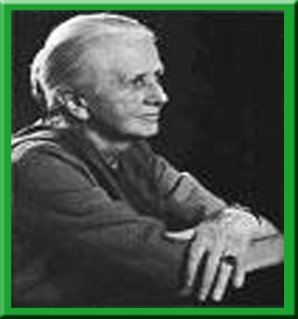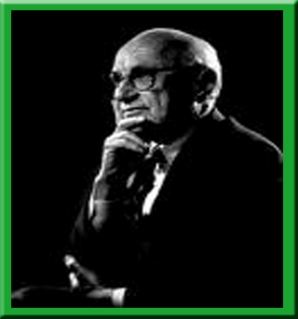Unconventional Warfare in modern times and its efficacy
By Khin Ma Ma Myo (12/12/2008)
Introduction
“An unconventional era of warfare requires unconventional thinkers. The range
of security challenges - from global terrorism to ethnic conflicts; from rogue
nations to rising powers- cannot be overcome by traditional military means alone”
(Robert Gates)1
Unconventional warfare (UW) is a type of warfare being used as a principal weapon of revolutionary movements and of wars of liberation. It is a weapon system of hot and cold wars being employed by conventional forces, civilian populations and paramilitary organizations to achieve political and military goals. During the Cold War, the Sino-Soviet bloc's governments considered it for promoting the goals of the world communism while United States and its allies used it for safeguarding their interests in the period of peaceful coexistence and for the protection of vital industrial complexes and key industries in the event of general war. Aftermath of the Cold War, with the widespread of terrorism, unconventional warfare has become an instrument being utilized by terrorist organizations to promote their radical political goals.
This paper attempts to trace conceptualizations of unconventional warfare as a component of revolution, as a strategic foreign policy tool and as a threat to both national and international security. Moreover, theories and models of unconventional warfare such as people's war, Foco theory, urban guerrilla, Palestinian model of terrorism, ethno-nationalist terrorism, suicide terrorism and prospect theory are investigated. Furthermore, the efficacy of unconventional warfare is analyzed in the areas of US unconventional warfare campaigns, guerrilla warfare and terrorism.
Conceptualizations
Definitions
The definitions of unconventional warfare has evolved over time. The concept became prominent during the Napoleonic Wars in the form of guerilla warfare and was integrated within political, economic and social programmes over the course of subsequent centuries. In modern times, the concept of unconventional warfare acquired prominence due to its nature as a strategic foreign policy tool employed by state actors, as a component of revolution utilized by revolutionary forces to overthrow established authority and transform society through arms struggle and finally, as a threat to both national and international security employed by terrorist organizations to weaken a hated political authority. Since 1945, at least thirty-five nations were affected on their own territory in one way or another by unconventional warfare.2
In Slavko Bielajac's comprehensive definition:
Unconventional Warfare is a disintegrative weapon, for it seeks to destroy the links which bind together the political, economic, and military organism of the enemy. It is a type of warfare employed for political and military purposes. It is simultaneously a weapon of revolutionary movements and the only effective weapon for countering revolutionary movements.3
It is thus employed by both state actors and revolutionary forces. From insurgency perspectives, it is also known as a revolutionary warfare. On the other hand, it is regarded as a special operation by state forces such as United States Army Special Operations Forces (SOF). By the late 1960s, President Kennedy advocated UW as a strategic tool to exploit insurgencies against communist regimes.
As a strategic foreign policy tool
According to the field manual of US Army SOF Unconventional Warfare, the definition of UW is as follows:
Operations conducted by, with or through irregular forces in support of a resistant movement, an insurgency, or conventional military operations.4
This definition highlights the importance of irregular forces. However, the concept of Irregular Warfare (IW) is broader than the concept of UW. The former is a violent struggle among state and non-state actors for legitimacy and influence over the relevant populations by using indirect and asymmetric approaches or the full range of military and other capacities in order to erode an adversary's power, influence or will.5 The activities of IW include insurgency, Counter Insurgency (COIN), UW, Civil-Military Operations (CMO), transnational criminal links and so on. Thus, UW is a special operation and a part of IW.
As a component of revolution
Traditionally, UW is used by guerillas to remove their own governments or foreign occupations. Guerilla Warfare (GW), as defined by Samuel Huntington, is a form of warfare by which the strategically weaker side assumes the tactical offensives in selective forms, times and places and it is the weapon of the weak. 6 As the adversary is the superior military forces, the aim of the GW is to destroy the will of the adversary rather than to control the territory.
The concept of GW was reflected in the writings of 19th century military writings, however, it was only regarded as a minor adjunct to conventional warfare. For instance, Von Clausewitz saw GW as an auxiliary to regular military forces in the context of resisting an invading army.7 In fact, the revolution organized by T.E Lawrence of Arabia in 1916-1917 was the initial guerilla war in its own rights in modern times. It also became an important element in Mao's ideas on revolution and its Vietnam and Lain America variations such as the Cuban theory of 'foco' or mobile strategic base, Brazilian urban model and so on. In 1968, E1 A1 airliners were hijacked by members of the Popular Front for the Liberation of Palestine and some forms of media terrorism8, termed by Gerard Chaliand, has started as a substitute for GW.
As a threat to security
According to Stanley Michalak, terrorism is a strategy to weaken a hated political authority and a security threat.9 Although the word 'terrorism' was first appeared during the French Revolution, the contemporary usage has become prominent after the Cold War, especially aftermath of the shock of 9/11. It is a highly disputed definition and varied in terms of the priorities and particular interests of the specific agency involved.10 In U.S. Department of Defense's definition,
Terrorism refers to the calculated use of unlawful violence or threat of unlawful violence to inculcate fear; intended to coerce or to intimidate governments or societies in the pursuit of goals that are generally political, religious, or ideological objectives.11
As it identified both threats and targets by the terrorists, it could be argued as a complete definition. However, it does not distinguish between terrorism and GW. In his book of Inside Terrorism, Hoffman clearly distinguished terrorism form other forms of crime and irregular warfare by identifying the characteristics of terrorism as follows:
ineluctably political in aims and motives
violent- or, equally important, threatens violence
designed to have far-reaching psychological repercussions beyond the immediate victim of target
conducted either by an organization with an identifiable chain or command or conspiratorial cell structure or by individuals or a small collection of individuals directly influenced, motivated, or inspired by the ideological aims or example of some existent terrorist movement and/ or its leaders; and
perpetuated by a sub-national group or non-state entity.12
Terrorism thus represents a threat to individuals, state actors, governments and society as a whole. Therefore, the nature of unconventional warfare in terms of terrorism is merely a threat to both national and international security. In the next sections, theories and models of UW will be investigated with a detailed analysis.
Theories and Models of Unconventional Warfare
As a component of revolution (Guerilla Warfare)
T.E. Lawrence initiated a guerilla warfare in Arabia in 1916-17. He described regular armies as 'plants........firm rooted, nourished through long stems to the head' and the guerillas as '.... an influence.....intangible........a vapor.....' to cause the plant to over-extend itself, wither or die. 13 In his work of Seven Pillars of Wisdom, Lawrence articulated some factors for a successful unconventional warfare such as a strong and secular guerilla base, sophisticated and vulnerable enemy with limited strength to cover a wide territory, sympathetic population, the rebels' qualities of speed and endurance, independent arteries of supply as well as technical equipment to destroy enemy communication lines. Lessons learned from Lawrence were applied in Anti-Fascist movements during the Second World War.
In the late 1940s, Mao Tse-Tung won the greatest guerrilla warfare in history in China with the three-stage theory of insurgency. The three-stage theory can be derived from Mao's best-known works of 'Problems of Strategy in China's Revolutionary War' (1936), 'Problems of Strategy in Guerrilla War Against Japan' (1938) and 'On Protracted War' (1938). He laid down three stages for a successful guerilla warfare, i.e., Strategic Defensive, Stalemate and Strategic Offensive.14 Stage 1 is also known as the organizing phase because it is characterized by the avoidance of pitched battles with government forces and to build up local guerilla forces and a structure of cadres to establish moral superiority with the local population. Stage 2 is characterized by the prolonged battle to reduce the government's physical and moral strength and rejection of peace proposals and any counter government efforts to divide or to co-opt the movement. Finally, Stage 3 is characterized by the employment of insurgent forces to destroy weakened government forces occupying defensive positions. In fact, Mao's success in guerrilla warfare is not only determined by this philosophy but also by the insurgents' moral superiority. He set up a code of conduct known as 'The Three Rules and Eight Remarks' to demonstrate moral superiority.
By looking at the development and functioning processes of 'people's war', Michael Elliot-Bateman created a people's war model15 that have six essential conditions for its success:
The revolutionary potential exists.
A revolutionary situation develops
High-grade revolutionary leadership has emerged and a sound organization has been developed
Support of the people has been achieved
Geo-political factors are favorable and
the philosophy of co-ordinated action in all the battlefronts, namely cultural-spiritual, political, social economic, military and international has been developed.
This model is useful to analyze the efficacy of the guerilla warfare.
Mao's philosophy was put into practice by guerrilla forces in South East Asia like Vietnam, Burma and Malaya. Vietnamese communist leader Vo Nguyen Giap accepted Mao's three stage theory and innovated some preconditions before entering to the last stage such as superiority of revolutionary forces, a favorable world situation and a noticeable weakening of the enemy's resolve. He also modified the last stage by dividing into four sub-stages such as gaining popular support, modernizing revolutionary forces, strengthening international developments and gaining greater momentum.16
In Latin America, another variation of guerrilla warfare theory was put forward by Ernesto 'CHE' Guevara and his theory of the 'FOCO'. FOCO means the centre of gravity of the guerilla movement which refers to the initial critical mass of the guerrillas, the vanguard of the revolution, from which all else is derived. FOCO was also represented as the political and military heart of the insurgency.17 It was successfully practised in Cuba and during the 1960s, at least twenty FOCOs (mobile strategic base) were appeared and disappeared, notably in Peru and Bolivia. The strategy of FOCO is to launch the armed struggle without any preliminary political groundwork within the population. However, there were some striking failures based on this theory and these failures led to Carlos Mareghela in Brazil and Tupamaros in Uruguay to resort to 'urban guerilla' warfare. Many advocates of urban guerilla warfare pointed out that the idea of the countryside 'encircling' the cities is outdated due to the fast pace of urbanization in Latin America. 18 Abraham Guillen advocated the leading role of students in the revolutionary processes in Latin America.
In 1968, El A1 airliners were hijacked and these were adopted as substitutes for guerrilla warfare by various organizations very quickly. Terrorism has been regarded as a violent form of psychological warfare, as Raymond Aron stated, and widely spread through out the world.
As a threat to security
Reviewing the history of terrorism over a period of 150 years, it is clear that the political effects of terrorism tend to generate the destabilizing society. To analyze how terrorism represents as a threat to national and international security, it is important to identify the motives and forms behind the terrorist attacks.
The motives of the Russian terrorists of 1881 and of 1904 were part of the revolutionary process. Some opted for political actions while others opted for terrorism against the regime. As Laquer argued, they were by no means more radical in their rejection of the regime than their comrades who rejected terrorism.19 Similarly, the early Latin American terrorists, the Baader-Meinhof gang in Germany, the Red Bridges in Italy, the Watermen on American campuses had their well wishers on the left. 20Until 1970s, terrorism only aimed at social revolution or national liberation and takes the form of assassinations and indiscriminate killings. This situations began to change in the 1970s by taking the forms of bombs placed into civilian airlines or attack against the Olympic athletes as stated by Hoffman as 'internationalization of Terrorism'.21
The internationalization of Terrorism has emerged with the forms of Ethno-nationalist terrorism, revolutionary left-wing terrorism, Extreme-right terrorism and Suicide terrorism. On July 22, 1968, Palestinian terrorists from the Palestine Liberation Organization, hijacked the Israeli airline as a bold political statement. It creates major media events through the combination of political statement, symbolic targeting and crisis-induced de facto recognition. It also led to a dramatic tactical changes in terrorism and between 1968 and 1980, Palestinian terrorist groups were indisputably the world's most active, accounting for more international terrorist incidents than any other movements.22
All these Palestinian's successes were cited as examples for the rise of ethno-nationalist terrorism. In Armenia, two terrorists groups such as the Armenian army for the secret Liberation of Armenia and Justice Commandos of the Armenian Genocide emerged as an ethno-nationalist group that sought to duplicate the Palestinian's success. Another example is the tiny South Moluccan expatriate community in the Netherlands. Later, this Palestinian model has been adopted by several ethno-nationalists/ separatist groups seeking international recognition and self-determination.
The Palestinians were not only models but also mentors for the new forms of terrorist organizations. Bruce Hoffman stated the Palestinians as mentors for the rise of revolutionary left-wing terrorism.23 One of the example is the Red Army Faction (RAF) from Germany. Although, it was not a product of Palestinian model, German terrorists in both RAF and other groups chose to make a common cause with the Palestinians. They were involved in a series of attacks as combined teams with the Palestinians such as the OPEC oil ministers' conference in Vienna, the hijacking of Air France Flight to Uganda and so on. Later, RAF joined the French left-wing terrorist organization Direct Action to form PLO- like umbrella 'anti-imperialist front of Western European guerrillas'.24
On the other hand, extreme-right terrorism also takes place. Italian right-wing terrorists had been responsible for some of the bloodiest attacks in Europe, mainly the attack at the Piazza della Loggia in Brescia, at the Piazza Fontana in Milano, etc. In Germany, the extreme right and the neo-Nazis have been split into more than a hundred groups, some have given their members systematic military training and police discovered caches of weapons.25 In Sweden, Neo-Nazi terrorism has emerged as a largely homegrown place. Lacquer argued that there have been more intensive relationships between these extreme right groups in Europe and Islamist and Arab terrorists groups, especially in the form of business transactions.26
Another form of terrorism is the Suicide Terrorism that had a greater impact on the destabilization of the global world. Mia Bloom argued that there is an increasing and disturbing trend towards Islamic suicide terrorism.27 The modern era of this religious terrorism have roots in Lebanon and Kuwait, and started to spread beyond Middle East to Sri Lanka, India, Argentina, Israel, Saudi Arabia, Kenya and Tanzania. The events of 9/11 had shocked the world when nineteen Al Qaeda operative hijacked the four commercial air flights to use as human cruise missiles to the high-value symbolic targets such as the World Trade Center and Pentagon. Al Qaeda is the vanguard of Salafi Jihad movement, which includes many other terrorist groups that collaborate in their operations and share a large support base.28 The Global Salafi Jihad movement is a worldwide religious revivalist movement with the goal of reestablishing past Muslim glory in a great Islamic state stretching from Morocco to the Philippines and it advocates the defeat of the Western powers that prevent the establishment of this true Islamic state.29 Since 9/11 in 2001, the vast increases of suicide terrorism have occurred in several countries. In 2005, suicide attacks had taken place in at least twenty four countries including UK, Israel, Italy, Indonesia, Pakistan, Singapore, Iraq, etc.
As a strategic foreign policy tool
By the early 1960s, US President Kennedy advocated the UW as a tool to exploit insurgences against communist regimes. During the 1970s and 1980s, giving a rise in terrorism and extremist political factions led to the US government's attention of the need for a flexible, highly trained military forces ready for small-scale, complex, high risks missions inside hostile states. The purpose of US Army special operations force (SOF) has been unconventional warfare throughout its history. With the end of the Cold War, SOF fought to prove its viability in the new world order by establishing a new command structure and pursuing joint operations to prove that its primary mission of UW would remain a visible strategic alternative for future conflicts.30
In the late twentieth century, President Clinton decided to implement a convert UW campaign with the missions to pursue high value targets in the face of recurring threats like Iraq and Afghanistan. He understood there was risk to allow Saddam Hussein to go unchallenged and recognized there may be threats in part of the Al Qaeda to the international security. So he chose to conduct UW as a strategic foreign policy in response to Iraq and Afghanistan from several foreign policy options such as do nothing, Diplomatic measures (eg. Economic sanctions), Political/ military intervention (eg. conventional military campaigns of limited bombings, peacekeeping operations, low intensity conflicts, total war and unconventional warfare that can be overt, convert or clandestine). Prospect theory can explain his decision-making behavior under conditions of risk.
Prospect theory has become a framework for elucidating political behavior and risk propensity in the foreign policy since it was developed by Kahneman and Tversky to offer a more comprehensive explanation for decision-making behavior.31 It is a theory that helps explaining decision-making under risks. Figure 1 (see appendix 1) illustrates a range of foreign policy options across the spectrum of risks. In the case of Iraq and Afghanistan, prospect theory provides two hypotheses for the President. If he operated in the domain of losses, he will exhibit risk prone behavior by choosing political or military intervention in another sovereign state. On the other hand, if he operated in the domain of gains, he will exhibit risk averse behavior such as diplomatic measures or no action. So it the decision for political or military intervention is made, the choice to intervene using UW options offers a different sets of risks when compared to conventional military operations.
If the political guidance to conduct UW as a strategic foreign policy tool is addressed, appropriate military objectives must be translated through a rigorous and continuous mission and threat analysis.32 Although each application of the UW is unique, it generally passes through seven phases of Preparation, Initial contact, Infiltration, Organization, Build up, Employment and Transition.33 For Preparation phase, it must start with a complete IOPE (Intelligent preparation of the complete operational environment). For Initial Contact Phase, a pilot team should make a contact with an established or irregular element. The Infiltration phase may be varied. It may be overt as a chartered civilian flights or as discrete as a clandestine insertion. Organization Phase is the development of the capacity of regular forces. There may be three components of insurgency such as guerrillas, underground and auxiliaries and these must be organized as an area command. The building up phase involves the expanding of these irregular elements and their capabilities to meet mission objectives. During Employment Phase, other irregular forces operate in a hostile environment and these operations support the objectives of the area command. Finally, the planning for transition begins if there are some forms of stability operations. Some of the phases may occur simultaneously or, in certain conditions, not at all.34
Alternatively, Steven Basilici and Jeremy Simon 34 developed a model of unconventional warfare to show the range of activities that can be categorized as UW missions and the frequency of use. Figure 2 (see appendix 2) illustrates the UW model that depicts the relationship between a range of missions and the frequency of use. In this model, non-permissive environment means the efforts to undermine a hostile regime and permissive environment means the efforts to provide support to a friendly government. A range of missions such as guerilla warfare, sabotage and subversion and Advance Force Operations (AFO) are considered as the 'non-permissive' side, while, UW missions in a permissive environment are limited to advisory assistance, training assistance, intelligence activities and Advance Force Operations.
Between the two sides of non permissive and permissive, the middle ground or 'gray zone' exists and gray zone activities constitute the bulk of UW efforts serving to set the conditions for the more 'risky' activities of offering support to an insurgency and/or support to an ally in the form of advisory assistance. They also described activities in the gray zones as Operational Preparation of the Battlefield (OPB) and Advance Force Operations (AFO). In short, OPB is passive and AFO is active, however, both must be focused more on human terrain and limited military actions like small scale direct missions. They argued that UW operations are most useful in situations where the US is neither waging an all-out guerrilla warfare campaign nor sponsoring a full-fledged FID project but rather in the middle ground, or 'gray zone'.35
Efficacy of Unconventional Warfare
As a component of revolution (The case of Sri Lanka)
The case of Sri Lanka's insurgency can be analyzed by using the model of people's war, particularly the revolutionary model by Michael Elliott-Bateman. The insurgency in Sri Lanka is a by-product of prolonged ethnic conflict between Sri Lanker's majority Sinhala community and the minority Tamil community. The Tamil minority sees themselves being exluded by an elected Sinhalese government that proscribed their language, prospects of education, professional employment and ethnicity. 36 So, it is clear that the first condition of people's war, the revolutionary potential has already existed.
In 1983, the Tamil insurgent group, the Liberation Tigers of Tamil Eelam (LTTE) ambushed the Sinhala government forces that resulted the death of 13 soldiers. It was violently reacted by the majority community by means of the bloody ethnic riots. Following this, over one million Tamils left for the predominantly Tamil provinces and from 1983 to 1987, over 20,000 Tamil youths were recruited and trained by the LTTE. Some left for neighboring India and the West to seek asylum. These conflicts escalated and the revolutionary situation has well-developed.
In the LTTE, Prabhakaran's dominating leadership reaches into each division of his organization and achieves a greater unity of effort.37 LTTE's recruitment was targeted on the naturally motivated families that have suffered at the hands of Sri Lanka's armed forces. So LTTE fighters are motivated by their own commitment and self-respect. The broad categories of the activities of LTTE are finances and fund-raising; international linkages; politics and the media; and military operations. The tactical organization is functional and the degree of military sophistication is based on the technical skills of the groups such as Black Tigers for special operations, Sea Tigers for maritime operations, Communications, support weapons, logistics, survey, intelligence and explosives units. It points out the emergence of high-grade revolutionary leadership and the development of a sound organization.
For insurgency, the political and physical support of the population is essential and LTTE reflects this support. It has established a political office separated from the operational wing. Tamil political refugees in India and the west also became the economic backbone for their military campaign. The LTTE also has local sources of income such as bus companies, printing, tea estates, farming, small factories as well as the taxation of cigarettes and imported goods in LTTE-held areas. The LTTE international linkages made inroads to countries where there was a Tamil presence.38 The Tamil linkages grew in the west, at the nucleus of London. Their international arrangements are well-developed and organized in the manner of international corporation. They confined to Middle East for military development and to the West and places like Yemen and Zambia for financial assistance. As the classical description of 'winning the hearts and minds of the people' has achieved, Tamil insurgency can be regarded as a popular insurgent force. The LTTE was supported by a sufficient element of the population to sustain it.
One of the survivals of LTTE is also related to the favorable Geo-olitical factors. LTTE attempted to control parts of the north east by providing a well-managed administration. It helps LTTE to organize Tamil public into supporting LTTE by means of finance and recruits. LTTE used to have a stronghold areas in most of the northern parts and some eastern parts of Sri Lanka. Geographically, the LTTE organization is structured into seven regular commands under the special district commanders responsible to Prabhakaran. The cadres of these seven commands belong to political and military wings.
Moreover, the philosophy of coordinated action in all the battlefronts has been developed by LTTE. It has the ability to conduct coordinated action and to maintain pressure in all fronts. Militarily, the doctrine of LTTE is to kill the opponents rather than to drive away them. Acts of violence are linked to a political manifesto and logistic targets are means to the ends. 39 However, it led to some degrees of weak international community support, coupled by the effective use of Sri Lanka government's propaganda against ITTE as a major terrorist group. Despite of this failure, the LTTE is arguably, the most organized and well-controlled liberation movement in the world that have met most of the conditions for people's war.
As a threat to security (The case of Jihad against India )
The case of Jihad against India has been identified as a threat to security. Traditionally, the Arab East have regarded Zionism and the West as invaders, however, the situation in India was different, for the main historical complaint of the Hindus was the Muslim invasion of India and destruction of Hindu civilizations.40 Indeed, there were a lot of historically rooted conflicts among the Muslims and Hindus in India.
Despite of the rule of Muslim Tyranny for more than one millennium from 715 up to 1761, the Islamization of India never completed. Then the Hindus counter attacks began and liberated large tracts of the country from Muslim rule. However, the Mughal (Muslim dynasty in India) court customs, attires and habits were remained until the British dethroned Mughal King of India in 1851. The British rule was seen by some of the Hindus as a relief from Mughal King. When there was a departure of the British Colonial ruler, Muslim leaders attempted for the Muslim majority provinces to be cut off from India and made into a new nation called Pakistan. When India and Pakistan was partitioned in 1948, the ruling maharaja of Kashmir region, which have the majority of Muslims, decided to join India.
Over the next decades, this region has become the most embattled and the further complication was the fact that the preference of the majority of population is independence rather than joining India nor Pakistan. However, both India and Pakistan refused an independent Kashmir and there have been a wide range of fighting from full-scale war to cross-border raids. The conflicts over Kashmir produces a new form of warfare, Jihad against India, declared by the Islamic radicals with an attempt to turn a national liberation insurgence into a religious campaign.41
Within the last decades, the jihad against India has accelerated. From 1989 to 1993, Jihad terrorism was mostly centred in Jammu and Kashmir carried out by Kashmiri organizations resorted to attacks with hand-held weapons. There was no use of suicide terrorism during this period. From 1993 to 1999, terrorists started using imrovised explosive devices (IEDs) and landmines although there was no use of suicide attacks. However, the jihad was extended to Indian territory and Mumbai blasts of March 1993 started to take place.
In November 1999, the head of the political arm of the Lashkar-e-Taiba announced the break-up of India and dissolved into Pakistan. On the same occasion, another leader encourage to wipe out India altogether. From 1999 to 2003, Jaish-e-Mohammad appeared in the jihadi scene. Inspired by Al Qaeda, Suicide terrorism was resorted to by various terrorists organizations against India. Although there was no common command and control initially, since 2004, there has been an increasing evidence of command and control exercises claimed by Indian Intelligence committee. In 2004, there was a pair of grenade attacks against the political targets carried out by a small terrorist group called Jamait-ul- Mujahedin and in 2006, there was a bombing on Mumbai commuter rail carried out by Lashkar-e-Taiba. Kanchan Laxman claimed that Lashkar-e-Taina has a close link with Al-Qaeda.42
On 26 November, 2008, a series of coordinated action and multiple attacks were occurred in Mumbai targeting luxury hotels, a hospital and a railway station, etc. After this attack, the Interior minister of India told the parliament as 'we have to take hard decisions and prepare country and people to face the challenge of terrorism'43. Thus, it is clear that the case of jihad against India has been a serious challenge to the national security of India. Furthermore, it has spill-over effects on international security as well. The 2003 attack on the Indian parliament led to a major outcry in India to blame Pakistan and response. The war was prevented by the intervention of the United States and other countries. The recent attack on Mumbai also led to the pointing of Indians' finger of suspicion to Pakistan. To get a positive solution, Pakistan then had to raid the main Laskar-e- Taina camp and UN security council took further security measures by means of sanctions and arms embargo on the leaders of terrorist's group and its links. Bruce Riedel of the Brookings Institution also pointed out that there are a lot of groups using terror as a tool in India, however, the most dangerous menance comes from Kashmiri groups based in Pakistan with long and intimate connections to the global jihadist network centred around Al-Qaeda.44 Overall, the efficacy of Jihad against India warfare has failed because it had a limited appeal even to the Muslim world itself due to the use of terror as a tool to both national and international security.
As a strategic foreign policy tool (The case of Afghanistan)
After 9/11, the United States began the 'war on terror' against the Taliban regime in Afghanistan by means of bombing strikes and ground attacks. Although the official war started in 2001, Unconventional warfare had been already utilized as a US strategic policy tool since 1999. Until 1998 bombings, US administration towards the Taliban regime had a lack of strategic planning. Throughout the period of 1989 to 1998, Afghanistan lost its strategic value to US interest due to the withdraw of Soviet troops and the fall of the communist regime. The United States tentatively accepted the Taliban domination and was convinced by Saudi Arabia and Pakistan that the fundamentalist party would prove strongest at maintaining law and order.45 Afghanistan was insufficient threat to the United States national power, as assumed by the administration and intelligence community.However, on February 1998, the US administration had to plan some convert raids into Afghanistan with a mission to capture Osama Bin Laden after he issued a calling for war against America and its allies. US media later uncover these mission, although it was not clear whether these missions were carried out or not.46 On the same years, twin bombs exploded at the US embassies in Kenya and Tanzania and US began to use diplomatic and military measures targeting the Al-Qaeda infrastructure.
Subsequently, in 1999, President Clinton signed a finding to conduct special activities permitting the recruitment of three proxy forces such as Uzbek counterinsurgency unit, Pakistani commandos and tribal militia units in the Northern Alliance to operate in and around Taliban controlled areas. He also signed three memoranda of notification to expand the authority of convert operations such as the use of lethal force to capture or kill Bin Laden, addition of specific Al-Qaeda members to the target list and sanctioning operators to shoot down private aircraft if Al-Qaeda members were aboard.47 This directive gave the leading way for CIA operatives to contact faction leaders inside Afghanistan and US supported these faction leaders to strike Bin Laden and Al-Qaeda. However, due to the language difficulties and other barriers, the UW campaign was unable to a large extent. In Washington, President and his key staff have a desire to implement a large scale UW campaign, defence staff and military advisors are reluctant to engage in such efforts. Until 2001, Al-Qaeda was remained as a third-tier priority for foreign policy concerns and UW in Afghanistan was severely limited and solely the responsibility of CIA paramilitary forces rather than ground SOF forces.
So it is clear that appropriate military objectives were not translated through a rigorous and continuous mission and threat analysis even though the political guidance for the use of UW as a strategic foreign policy tool was set up. Steven Basilici and Jeremy Simmons pointed out several political factors, that limit the success of UW campaign in Afghanistan such as
the failure of administration to construct a grand strategy for political-military intervention which created a lack of cohesive policy both between US agencies and for US allies.
The unwillingness of the military advisors supporting the SOF military intervention
the lack of domestic interests in international affairs and international security
little public attention devoted to the dangers of Al-Qaeda terrorists strikes
restrictions on UW practitioners, I.e., limited resources, a force structure that is reliant on the reverse component, legal restrictions, budget limitations and political constraints to the specific use of convert operations, etc.48
Due to these constraints, UW as a strategic foreign policy tool in the case of Iraq was failed and left spill-over effects on Bush Administration.
Conclusion
This study has attempted the conceptualizations of unconventional warfare in modern times as a component of revolution, as a strategic foreign policy tool and as a threat to both security and international security and assessed its efficacy by using a case-study analysis. It involves studies in the contemporary nature of terrorism, however, it excludes the state terror directed against citizens of the State, nor terrorism inspired by a state, nor para-state terrorism.
Despite of past failures, Unconventional Warfare still represents as the best way to use as a strategic policy tool to respond unconventional threats. An expansion of UW might be contributed to a coherent strategic framework to address the rising national and international security concerns. Consequently, it is also important to review past failures for future strategic analysis and UW campaigns to wage a War on Terrorism.
On the other hand, guerrilla warfare may still be used as a component of revolution for liberations movements against the strong conventional armies in some areas that have a deeply rooted long history of intrastate conflicts, ethnic or religion oriented. Due to the character of deep rooted and protracted, these conflicts can only be resolved if both sides opted for true peace without arms. But historical lessons showed that the regimes used to deny peaceful negotiations and the classic saying of Frederick the Great49 as 'negotiations without arms are like music without instrument' is still the case for some parts of the world.
Moreover, there is a growing element of madness in contemporary terrorism and terrorists chose targets indiscriminately. At the same time, the search for non conventional weapons that might kill hundreds of people has been underway and no one can say how long the period through which we live may last. As Laqueur noted, it could be a matter of years or of decades.50 For the future of jihad terrorism, as far as some Islamic radicals concerned jihad as an individual and collective duty of a true believer, it will represent a threat to both national and international security.
Notes
Acknowledgement
This paper could not have done without the encouragement of Jim Wyllie and his excellent seminars.
Robert Gates, 'Remarks to Air War College', speech, (Maxwell, AL, April 21, 2008)
J. K. Zawodny, 'Forward' in Thorsten Sellin & Richard Lambert (eds), Unconventional Warfare, (Philadelphia: American academy of political and social science, 1962), p. VIII.
Slavko Bjelajac, 'Unconventional warfare: American and Soviet approaches' in Thorsten Sellin & Richard Lambert (eds), Unconventional Warfare, (Philadelphia: American academy of political and social science, 1962), p. 74-81
Department of Defence, FM 3-05-201, (S/NF) Special Forces Unconventional Warfare, (Washington DC: GPO, 2007)
Department of Defence, FM 3-05-130, (S/NF) Special Forces Unconventional Warfare, (Washington DC: GPO, 2007)
Samuel P. Huntington, 'Introduction' in Modern Guerrilla Warfare: Fighting communist guerrilla movements, 1941-1961, (NY: The Free Press, 1962)
Azeem Ibrahim, 'Conceptualizations of Guerrilla Warfare', Small Wars and Insurgencies, Vol. 15, No.3, 2004, p.112-124
Gerard Chaliand, 'Terrorism: A means of Liberation?', Terrorism and Political Violence, Vol.1, No.1, 1989, p.21-27
Stanley Michalak, 'What college students learn about terrorism: A case study of IR Textbooks', The Newsletter of Foreign Policy Research Institute, 7, 2002
Bruce Hoffman, Inside Terrorism, (NY: Columbia University Press, 2006), p.31
Department of Defence Dictionary of Military and Associated terms, www.dtic.mil/doctrine/jel/dodict/data/t/05373.html
Hoffman, p.40
quoted in Richard Clutterbuck, Guerrillas and Terrorists, (London: Ohio University Press, 1977), p.30
Mao Tse-Tung, selected military writings of Mao Tse-Tung, (Peking: Foreign Language Press, 1966), p. 210-219
Michael Elloit-Bateman, Revolt to Revolution,(Manchester: Manchester University Press, 1974), p.286
John Pustay, Counter insurgency Warfare, (New York, The Free Press, 1965), p. 43-44
CHE Guevara, Guerrilla Warfare,(Wilmington, DE: Scholarly Resources, 1987)
Ian Backett, Modern Insurgencies and Counter-Insurgencies: Guerrillas and their opponents since 1750, (London: Routledge, 2001), p. 170
Walter Laquer, No End to War: Terrorism in the 21st century, (London, Continum, 2003), p.22
Laquer, p.147
Hoffman, p.65
The RAND Terrorism Incident Database, RAND corporations
Hoffman, p.74
Hoffman, p.75
David Michaels, 'Neo-Nazi Terrorism', Jewish Community Security Group, (London, April 21, 2000)
Laquer, p. 197
Mia Bloom, Dying to kill: The allure of suicide terrorism, (NY: Columbia Univeristy Press, 2007), p.2
Jason Burke, Casting a shadow of Terror, (London: I.B., Tauris, 2003)
Marc Sageman, Understanding Terror Networks, (Philadelphia, Univeristy of Pennsylvania Press, 2004), p.1
Captain Abigail Linnington, 'Unconventional Warfare as a strategic foreign policy tool: The Clinton administration in Iraq and Afghanistan', (Thesis, The Fletcher School, TUFTS University, 2004), p. 6
Rose McDermott, Risk-Taking in International Politics: Prospect Theory in American Policy, (Avn Arbor, University of Michigan Press, 1988)
Department of Defence, IP 3-07, Joint Doctrine for Military operations other than War (MOOTW), (Washington DC: GPO, 1995)
Department of Defence, FM 3-05-130, (S/NF) Special Forces Unconventional Warfare, (Washington DC: GPO, 2007), 4-4
Steven Basilici & Jeremy Simmons, 'Transformation: A Bold Case for UW', (Thesis, Naval Postgraduate school, Montarey, California, 2004), p.46
Ibid, p.52
Ernest den Haag, Political Violence and Civil Disobedience, (NY: Harper Torch books, 1972), p. 20
John Mackinlay, 'Globalization and Insurgency', Adelphi paper, 350, (London: OUP, 2002), p.73
Major General PSB Kulatunge, 'Insurgency in a small country: ethnic revolt in Sri Lanka', Report, (US Army War college, Carlisle, 2003), p.13
John Mackinlay, p.78
Laqueur, p. 183
Yoginder skand, 'The changing course of the Kashmiri struggle', Muslim World, (April, 2001)
quoted in Sanik-Sarak, 'New Challenges between India and Pakistan after Mumbai attacks', www.saniks.com)
quoted in BBC News online, 'India announces security overhaul', http;//news.bbc.co.uk/1/hi/world/south_asia/7776756.stm
quoted in Khalid Hasan, 'Mumbai attacks linked to global jihad', Pakistan Daily Times, Dec 02, 2008
Basilic & Simmons, p.51
James Risen, 'Militant leader was a US Target since the spring', NY Times, Sep 6, 1998
Gellman, 'Broad Efforts launched after 98 attacks', NY Times
Basilic & Simmons, p.60-65
A famous quote by Frederick The Great of Prussia
Laqueur, p.210
(Appendices)

